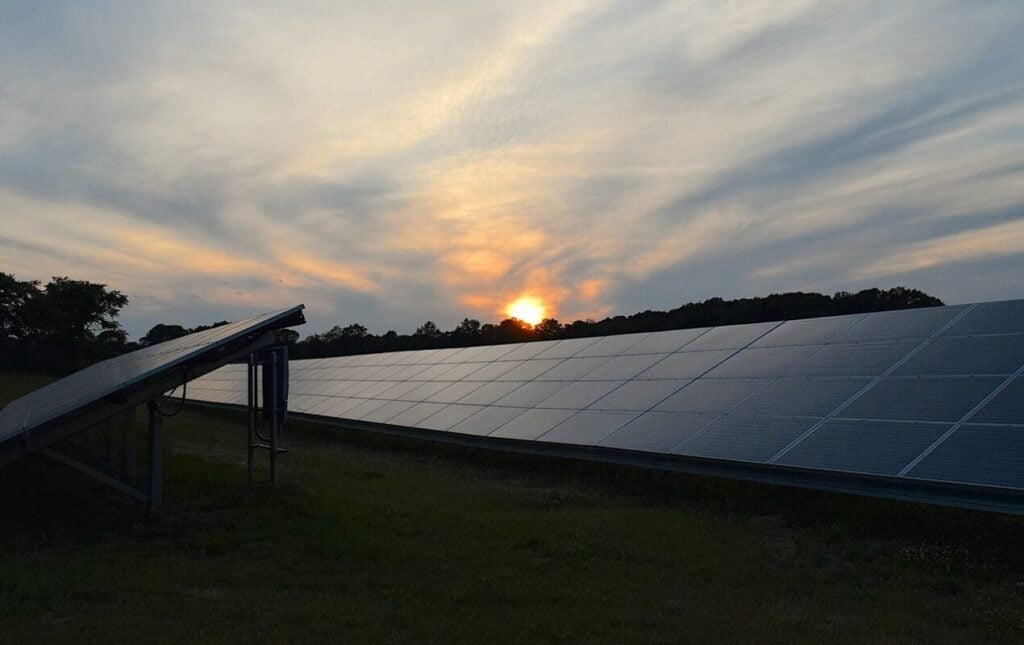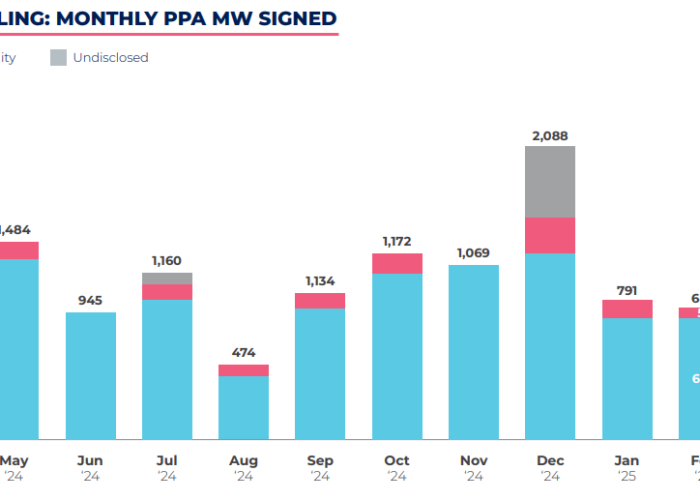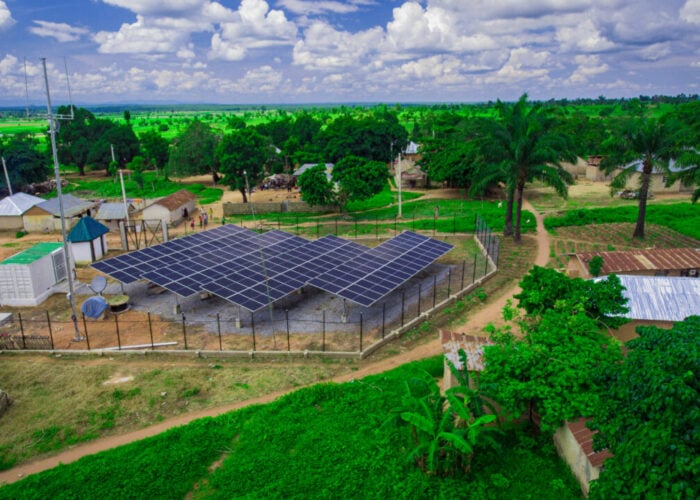
Europe is being buffeted by geopolitical storms. The waves of political fracturing, economic shock, increasing global conflict and shifting power dynamics washing up on its shores pushed the European Commission president, Ursula von der Leyen, to proclaim this week that: “The West as we knew it no longer exists.”
Amid this wider turmoil, the white heat of expansion that drove Europe’s solar PV market in 2022-23 has cooled and forecasts from bodies like Bloomberg and the International Energy Agency (IEA) suggest that the energy transition will need active political support and public will to meaningfully halt climate disaster, which are increasingly stretched and pulled in other directions.
Unlock unlimited access for 12 whole months of distinctive global analysis
Photovoltaics International is now included.
- Regular insight and analysis of the industry’s biggest developments
- In-depth interviews with the industry’s leading figures
- Unlimited digital access to the PV Tech Power journal catalogue
- Unlimited digital access to the Photovoltaics International journal catalogue
- Access to more than 1,000 technical papers
- Discounts on Solar Media’s portfolio of events, in-person and virtual
Or continue reading this article for free
However, the mood at the Large Scale Solar Europe 2025 summit, hosted in Lisbon by Solar Media at the end of March, was broadly optimistic about Europe’s situation. Solar installations are still increasing, despite slower growth, and the economics of solar PV and energy storage are positive in the long term. The EU has a target to more than triple its solar capacity from 2022 to 2030, which relies on a steady stream of business for the audience and speakers at the conference.
Changing priorities
Speaking on the opening panel of the conference, Bart White – global head of energy structured finance at Santander – said that the global macroeconomic situation is, “inevitably … going through a period of change.”
The last month has put that assessment into stark relief. The announcement of global tariffs on goods entering the US shocked financial markets and triggered warnings of recession, and those tariffs were then paused, inflicting whiplash on an already shocked world. EU countries have also begun to turn funds towards defence and domestic security after the guarantee of US military support against Russia has faded.
These aren’t the only factors pulling attention – and potentially political will and funding – away from renewables and the climate agenda. A report from Norwegian risk management consultancy DNV last October said that national and economic security priorities across the developed world, including Europe, “dominate the international agenda and slow the [energy] transition.”
Even as the energy transition gathers pace broadly, driven by solar PV and battery energy storage, price shocks and unstable economics are “fertile ground” for arguments – and even disinformation – about the cost of the energy transition and broader net zero targets, the report said. It’s hard to see a world where these factors aren’t exacerbated by greater volatility across Europe and the West.
Speaking with White on the opening panel last month, panellists from developers Terawatt and Bluefield, alongside the moderator, Lennart Van Walsum of the Global Solar Council (GSC), said that the European solar industry was becoming “adolescent”: less dependent on direct support from governments and more integrated with market dynamics.
If the appetite for investment is there, that’s a good thing. Things become more complex if uncertainty, even recession – which J.P Morgan currently holds as a 60% probability before year’s end – takes hold.
Another turn of the ‘solarcoaster’?
PV Tech Premium spoke to Van Walsum, director of EMEA and Americas at the GSC, on the margins of the conference about the challenges facing Europe’s solar industry from both without and within.
“Of course, there are external factors that are influencing the industry,” he said when asked about current financial and political uncertainties, “but those factors have been there in the last 20 years as well; they’re just maybe a bit more influential now. I’m not sure you can make the statement that the last 20 years have been stable and that the outlook now is less stable.”
He described the solar industry as a resilient and evolving thing, which has withstood challenges in the past and can continue to do so.
“There was always something,” he says, whether it was changeable government incentives that triggered short-lived booms in certain markets – like the UK in 2010 – or finding the money to build highly expensive, small-scale projects in the earliest days of the industry.
“It’s not a negative instability. It has always been as stable or as unstable as it is today.”
The figures for European solar installations would support that. The line on the graph continues to rise year after year and 2024 saw an all-time high in annual installations, according to data from SolarPower Europe, with 65.5GW installed across the continent.
Shocks have also given impetus to the European solar market in the past, such as the energy crises that followed the full-scale Russian invasion of Ukraine in 2022. Solar PV, and particularly distributed rooftop PV, became a rapid-deployment lifeline for European governments and citizens to protect against the energy price shocks caused by the war.
That focus on energy security hasn’t gone away, and Van Walsum points to the boom in solar installations following the crisis to show that: “The easiest and quickest way [to achieve energy security] is by building solar farms and implementing solar capacity locally.”
Indeed, energy security and independence now appear as high on the agenda for solar PV as decarbonisation, and awareness of renewables’ security potential has grown.
A political transition
However, the same SolarPower Europe data shows that the rate of growth in Europe’s solar industry has tanked since the immediate effects of the energy crisis subsided.
2024 saw just 4.4% annual market growth, the lowest rate since 2017 and a decrease of over 90% compared with the 45% and 53% capacity growth in 2022 and 2023.
The trade body warned that, without greater active support: “The EU solar market is facing stagnation and declining investment, putting 2030 renewable energy goals at risk. The sector’s ability to take a leading role in EU decarbonisation will depend on policymakers’ efforts to lift regulatory and market challenges that continue to hamper solar power.”
Ascendent right-wing parties, like Germany’s AFD and France’s RN, may push back against pro-solar policy changes, potentially bringing a growing share of the electorate with them.
Italy’s introduction of elaborate land use laws for agrivoltaics last year provides a small example of political rhetoric turning against PV in Europe; the agriculture minister decried the “wild installation” of ground-mounted solar projects in a largely political move that introduced uncertainty and difficulty for PV developers.
In another twist, the incoming German coalition government’s treaty has included proposals to allow international carbon credits to count towards European decarbonisation targets. Critics have said this would introduce carbon offsetting and water down commitments to deploying renewables. Director of the German think tank Agora Energiewende, Julia Metz, said the treaty: “Risks undermining [EU target] credibility and would mark a major shift in the EU’s current approach to climate action.”
This week, a forecast from Bloomberg New Energy Finance said that global policymakers will need to “take responsibility for creating the conditions for clean power to flourish”. It said that trusting solely in the economics of solar PV and energy storage technologies will “not be enough to avert climate disaster” and that political action will be key.
Europe has so been among the world leaders in political climate action—the BloombergNEF report said that most of the global emissions reductions through 2024 had come from Europe and the US. The EU has ambitious targets and continues to invest in clean energy projects through a number of vehicles for both deployments and prospective manufacturing.
This might maintain and increase the energy transition’s momentum, but the combination of war, fiscal challenges and shifting political narratives undoubtedly threatens that momentum.
Cristiano Spillati, MD of Italian renewables developer Limes, says that growing political uncertainty and a shift away from the imperative of energy transition in Europe is a risk.
“I think the narrative has changed, you can definitely see that,” he told PV Tech Premium in Lisbon. “And for me, it’s a big industrial risk because Europe is definitely losing in terms of competition.”
Van Walsum is still more sanguine: “Yes, things are a little different and every five or ten years something happens again, but it’s always balancing out. That’s the power of the solar industry and the product that solar represents; it’s so powerful and so helpful … it’s a no brainer to go solar.”
Solar PV did help Europe in the energy crisis of 2022-23, but it remains to be seen whether the sector will feel reciprocal benefits in the face of new problems.







